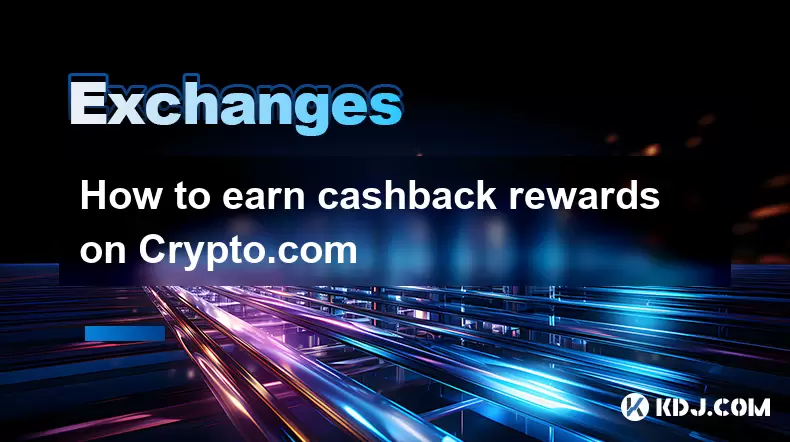-
 Bitcoin
Bitcoin $119100
0.38% -
 Ethereum
Ethereum $4277
0.63% -
 XRP
XRP $3.179
-0.89% -
 Tether USDt
Tether USDt $1.000
0.00% -
 BNB
BNB $807.5
0.48% -
 Solana
Solana $177.2
-3.03% -
 USDC
USDC $0.0000
0.01% -
 Dogecoin
Dogecoin $0.2283
-2.88% -
 TRON
TRON $0.3454
2.02% -
 Cardano
Cardano $0.7887
-2.14% -
 Hyperliquid
Hyperliquid $43.79
-3.38% -
 Chainlink
Chainlink $21.42
-3.21% -
 Stellar
Stellar $0.4373
-1.81% -
 Sui
Sui $3.704
-4.77% -
 Bitcoin Cash
Bitcoin Cash $584.0
2.28% -
 Hedera
Hedera $0.2491
-4.22% -
 Ethena USDe
Ethena USDe $1.001
-0.01% -
 Avalanche
Avalanche $23.31
-2.53% -
 Litecoin
Litecoin $121.5
-2.53% -
 Toncoin
Toncoin $3.393
1.47% -
 UNUS SED LEO
UNUS SED LEO $9.026
-0.03% -
 Shiba Inu
Shiba Inu $0.00001314
-3.84% -
 Uniswap
Uniswap $11.22
2.03% -
 Polkadot
Polkadot $3.916
-3.98% -
 Cronos
Cronos $0.1673
2.46% -
 Dai
Dai $1.000
0.01% -
 Ethena
Ethena $0.7960
2.16% -
 Monero
Monero $274.8
2.22% -
 Bitget Token
Bitget Token $4.427
-0.61% -
 Pepe
Pepe $0.00001153
-5.14%
How to buy Bitcoin through an exchange
To buy Bitcoin on a cryptocurrency exchange, you should choose a reputable one, register and verify your identity, enable 2FA, fund your account, navigate the trading interface, place a buy order, and secure your Bitcoin.
Feb 20, 2025 at 06:00 pm

1. Choose a Reputable Cryptocurrency Exchange
First, research and select a reliable cryptocurrency exchange. Consider factors like security, user - interface, available trading pairs, and fees. Some well - known exchanges are Coinbase, Binance, and Kraken.
Look at the exchange's regulatory compliance. A regulated exchange is often more trustworthy as it adheres to certain financial and security standards.
Read user reviews and feedback. This can give you insights into the exchange's customer service, ease of use, and any potential issues.
2. Sign - up and Complete Identity Verification
After choosing an exchange, go to its official website and click on the "Sign - up" or "Register" button. Fill in the required information, which usually includes your name, email address, and a secure password.
Most exchanges require identity verification for security and regulatory reasons. You'll need to provide a government - issued ID, such as a passport or driver's license.
Some exchanges may also ask for a selfie or a video of you holding your ID to confirm your identity. This process helps prevent fraud and money laundering.
3. Set Up Two - Factor Authentication (2FA)
Once you've registered and verified your identity, enable 2FA. This adds an extra layer of security to your account.
There are two common types of 2FA: SMS - based and authenticator app - based. An authenticator app like Google Authenticator or Authy is more secure as it's not vulnerable to SIM - swapping attacks.
Follow the exchange's instructions to set up 2FA. Usually, you'll need to scan a QR code with your authenticator app or enter a verification code sent to your phone.
4. Fund Your Exchange Account
To buy Bitcoin, you need to deposit funds into your exchange account. Most exchanges support several deposit methods, such as bank transfer, credit/debit card, and e - wallet transfers.
Bank transfers are often the cheapest option but can take several business days to process. Credit/debit card deposits are usually faster but may come with higher fees.
If you choose to use an e - wallet like PayPal or Skrill, make sure the exchange supports it. The transfer speed and fees may vary depending on the e - wallet.
5. Navigate the Exchange Interface
Familiarize yourself with the exchange's trading interface. Locate the sections for trading, account balance, and order history.
Find the Bitcoin trading pair. On most exchanges, the trading pair for Bitcoin against the US dollar is BTC/USD. If you're using a different fiat currency, look for the relevant pair.
Some exchanges offer a simple "Buy/Sell" interface for beginners, while others have more advanced trading platforms with features like limit orders and stop - loss orders.
6. Place a Buy Order
Decide whether you want to place a market order or a limit order. A market order will buy Bitcoin at the current market price immediately.
A limit order allows you to set a specific price at which you want to buy Bitcoin. If the market price reaches your limit price, the order will be executed.
Enter the amount of Bitcoin you want to buy or the amount of fiat currency you're willing to spend. Review the order details carefully before confirming.
7. Secure Your Bitcoin
After successfully buying Bitcoin, it's crucial to secure it. You can keep your Bitcoin in the exchange's wallet, but this is less secure as exchanges can be hacked.
Consider using a hardware wallet like Ledger or Trezor. These are physical devices that store your Bitcoin offline, providing a high level of security.
If you prefer a software wallet, choose a reputable one. Software wallets can be mobile - based, desktop - based, or web - based, but they are more vulnerable to online threats.
8. Learn About Bitcoin Storage and Management
Understand the concept of private keys. Your private key is like a password to your Bitcoin wallet. Never share it with anyone.
Regularly back up your wallet. If you lose access to your wallet due to a lost device or a technical issue, a backup can help you recover your Bitcoin.
Keep an eye on the security of your wallet. Update your wallet software regularly to protect against the latest security vulnerabilities.
Disclaimer:info@kdj.com
The information provided is not trading advice. kdj.com does not assume any responsibility for any investments made based on the information provided in this article. Cryptocurrencies are highly volatile and it is highly recommended that you invest with caution after thorough research!
If you believe that the content used on this website infringes your copyright, please contact us immediately (info@kdj.com) and we will delete it promptly.
- INJ ETF, Crypto Future, and Uncertainty: Navigating the Murky Waters
- 2025-08-12 02:50:12
- Cold Wallet, Litecoin, HBAR Outlook: Navigating Crypto Trends in 2024
- 2025-08-12 03:30:12
- Dogecoin's Wild Ride: EMAs, Support Levels, and What's Next for the Meme Coin
- 2025-08-12 04:10:13
- Layer Brett, Solana, and Staking Rewards: Chasing the Next Crypto Moonshot
- 2025-08-12 04:10:13
- Ruvi AI: The Presale Gem Poised for 100x Gains?
- 2025-08-12 02:50:12
- Bitcoin, Solana, MAGACOIN FINANCE: Navigating the 2025 Crypto Landscape
- 2025-08-12 00:30:13
Related knowledge

How to use margin trading on Poloniex
Aug 08,2025 at 09:50am
Understanding Margin Trading on Poloniex

How to read the order book on KuCoin
Aug 10,2025 at 03:21pm
Understanding the Order Book Interface on KuCoinWhen accessing the order book on KuCoin, users are presented with a real-time display of buy and sell ...

How to read the order book on KuCoin
Aug 12,2025 at 02:28am
Understanding the Basics of Staking in CryptocurrencyStaking is a fundamental concept in the world of blockchain and cryptocurrencies, particularly wi...

How to set price alerts on Kraken
Aug 11,2025 at 08:49pm
Understanding Price Alerts on KrakenPrice alerts on Kraken are tools that allow traders to monitor specific cryptocurrency pairs for price movements. ...

How to earn cashback rewards on Crypto.com
Aug 12,2025 at 02:08am
Understanding Cashback Rewards on Crypto.comCashback rewards on Crypto.com are a feature designed to incentivize users to spend using their Crypto.com...

How to use advanced trading on Gemini
Aug 08,2025 at 04:07am
Understanding Advanced Trading on GeminiAdvanced trading on Gemini refers to a suite of tools and order types designed for experienced traders who wan...

How to use margin trading on Poloniex
Aug 08,2025 at 09:50am
Understanding Margin Trading on Poloniex

How to read the order book on KuCoin
Aug 10,2025 at 03:21pm
Understanding the Order Book Interface on KuCoinWhen accessing the order book on KuCoin, users are presented with a real-time display of buy and sell ...

How to read the order book on KuCoin
Aug 12,2025 at 02:28am
Understanding the Basics of Staking in CryptocurrencyStaking is a fundamental concept in the world of blockchain and cryptocurrencies, particularly wi...

How to set price alerts on Kraken
Aug 11,2025 at 08:49pm
Understanding Price Alerts on KrakenPrice alerts on Kraken are tools that allow traders to monitor specific cryptocurrency pairs for price movements. ...

How to earn cashback rewards on Crypto.com
Aug 12,2025 at 02:08am
Understanding Cashback Rewards on Crypto.comCashback rewards on Crypto.com are a feature designed to incentivize users to spend using their Crypto.com...

How to use advanced trading on Gemini
Aug 08,2025 at 04:07am
Understanding Advanced Trading on GeminiAdvanced trading on Gemini refers to a suite of tools and order types designed for experienced traders who wan...
See all articles

























































































